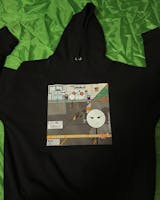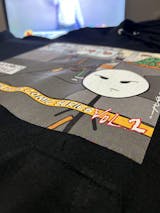When it comes to DTF printing techniques, it is possible to talk about many varieties. You can further customize the clothes we use in our daily lives, such as t-shirts and sweatshirts, by printing on them. Thanks to these customizations, it is possible to make more remarkable and eye-catching designs. DTF transfer, which differs from traditional printing methods, comes into play at this point.
What is the DTF Printing Process?
The DTF printing process takes place with the help of a heat press and other specialized equipment. Since it is a process that transfers to the substrates, the prints are made with special film pads and inks. The DTG method works only on cotton fabrics. However, the DTF method is applied on cotton and poly blended fabrics and materials.
What are DTF Printing Techniques?
DTF transfer, which is frequently used in the textile and clothing industry, is one of the techniques that shape the printing industry. Basically, the process of printing involves printing patterns with special equipment and then transferring them to the fabric. However, it is important for people who have not prepared this print before to be informed. Below is information about the printing techniques applied for a perfect printing project:
Printing on film: First, the design must be converted into a pattern. To do this, the PET film is placed in the printer trays and the print button is pressed. The printer will print this design 'directly onto the film' and transfer it to the PET film. Care must be taken not to smudge the print when it is first removed from the tray.
Dispensing the powder: This is the process of applying hot melt powder onto the film on the print. In this process, the powder must be applied while the print is wet. It is also important to make sure that the powder is spread homogeneously. It is necessary to have a tray next to the printer. It should be moved back and forth until the wet ink is covered. The excess should then be carefully shaken off.
Melting the dust: It is necessary to melt the powder on the spot. To do this, it is necessary to put the film directly into the oven for about 2 minutes. Alternatively, if you are using a vinyl or white toner printer, you can use a heat press. When choosing this method, you should make sure that you hold it in the air and do not apply any pressure. On the other hand, it is important to make sure that the top of the press does not come into contact with the transfers. The manufacturer should be consulted as no temperature and time is specified for curing DTF printing.
Pre-printing process: The last technique to consider is the pre-printing process. You should test your transfer before applying it to the garment. It is important that there are no wrinkles and no excess ink. If a perfect print is obtained, it can be applied on the garment. After this process, it is necessary to let it dry properly. However, since DTF printing is an instant drying method, it will not be a hassle.
Direct transfer process: A direct transfer print can be stored for a long time. So you can keep and even sell the print after DTF transfer. Let's talk about this transfer process. The PET film with the image and the melted powder is placed on the pressed material. Then heat press the DTF onto the T-shirt following the DTF print manufacturer's instructions.
Peel off the DTF print: This transfer process uses a cold peel and is 100%. After heat pressing, set the fabric aside and wait until the transfer has cooled. If you are printing many pieces of clothing, you can print them one after the other. You can let them all cool down after this process. Once the film has cooled, peel off the transfer to reveal the design.









